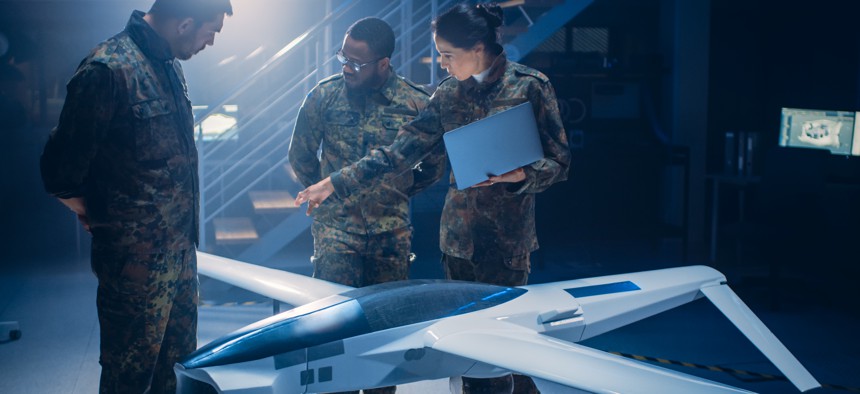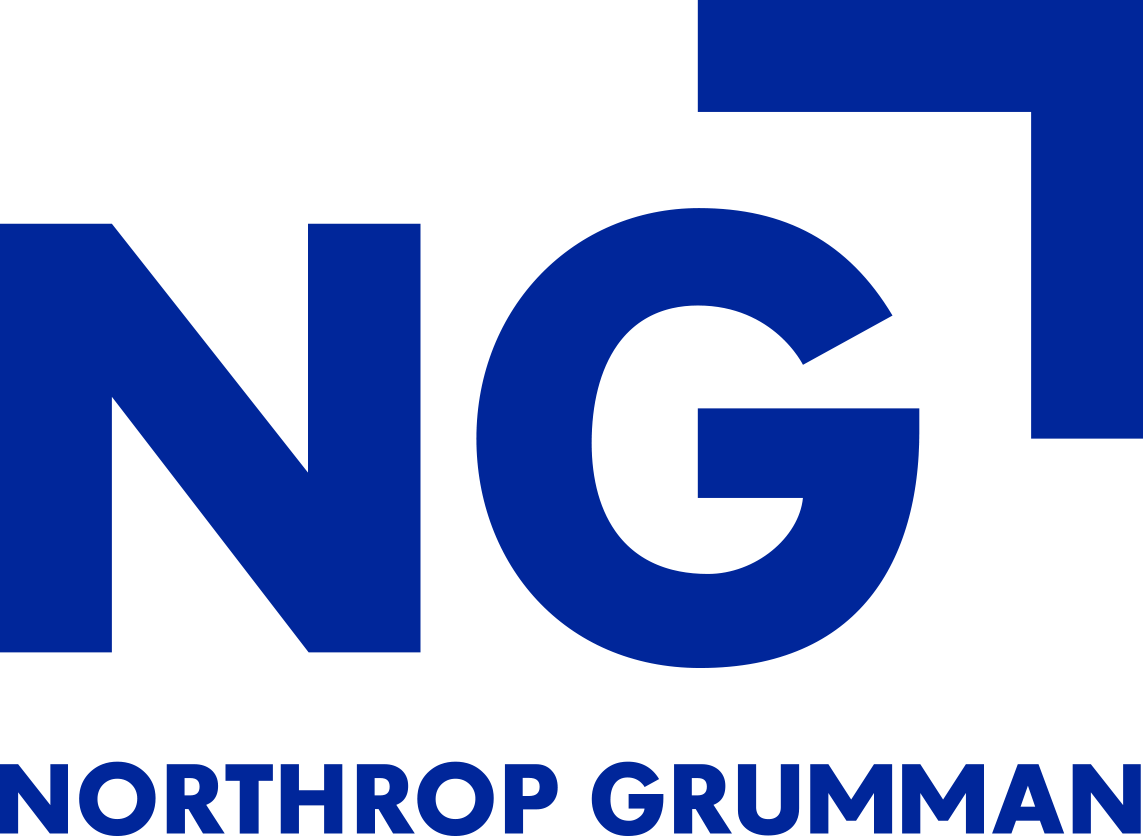sponsor content What's this?

3 Ways the DoD Can Prepare for the Future of Warfare
In a recent Defense One webcast, thought leaders from the DoD convened to speak about how the department can build a military that’s competitive today and tomorrow.
Presented by
Northrop Grumman

Over the last decade, the United States’ near-peer adversaries have adopted an aggressive approach to technology integration within their militaries. Near-peer adversaries like China have shifted from an overreliance on foreign military aid toward collaboration with their civilian sector.
“For much of its history, the People’s Liberation Army [PLA] relied on foreign military equipment, especially from Russia. But in recent decades, the Chinese government has invested heavily in state-owned and private-sector defense companies. Xi has pushed to reduce barriers between the two, emphasizing what he calls military-civil fusion,” according to Lindsay Maizland for the Council on Foreign Relations.
Without a doubt, these military-civil collaborations have acted as a catalyst, propelling China forward in key technologies like AI, biotechnology, and advanced materials manufacturing. In order to remain competitive, the U.S. Department of Defense will need to use similar tactics to advance its use of emerging technologies. To do that, the U.S. will need to rediscover its ability to experiment with new technologies, something it has recently moved away from.
Lieutenant Colonel Alex “Stoiky” Goldberg during a recent Defense One webcast entitled “Building Tomorrow’s Military,” chalked up this movement away from experimentation to a simple shift in focus.
“Over the last 30 years of near continual combat operations, especially as we've been focused on new, extreme terrorism around the world, our near peer competitors, like China are moving faster than us, faster in space and hypersonics,” he noted. Similar to how China exemplified an overreliance on foreign military aid, the United States now exhibits an overreliance on combat operations, Goldberg added. Goldberg is part of the solution to address this imbalance; he works as the strategic, defense and commercial engagement lead for the DoD’s Defense Innovation Unit, an organization established in 2015 that focuses solely on how the U.S. can leverage commercial technologies, like AI and 3D printing, for national security.
“In DIU we have a project called ICON that is working with the Marines to actually 3D [printed] buildings,” he noted. “We’re talking construction scale manufacturing. So, from printing buildings all the way to printing parts for our F-16’s and C1 30’s when we’re in the next conflict, we’re going to have to think of ways to be able to move and be more flexible.”
1. Get Ready to Collaborate
Collaboration has countless benefits: heightened efficiency, improved flexibility and increased innovation. Traditionally, however, there have been high barriers to collaboration between the civilian sector and the Department of Defense.
According to Goldberg, when the DIU was established, one of their primary objectives was to, “lower the barriers to entry for companies in the additive manufacturing space.” By setting an emphasis on lowering these barriers to entry, the DIU successfully supercharged its approach to collaboration with civilian-sector companies, effectively nixing the stratospheric barriers found in different DoD agencies.
For agencies looking to revamp their approach and follow the DIU's footsteps, two critical components must be met: education and implementation. Agencies must uncover current pain points for their commercial vendors and better understand what makes vendors step back, reassess or drop the project altogether. By exposing these pain points, agencies within the DoD can implement systems and procedures to help alleviate challenges brought about by high barriers to entry. Once these barriers have been reduced, agencies can efficiently and effectively begin to collaborate with civilian vendors.
2. Prepare for Industry & Tech Disruption
Low barriers to entry certainly make collaboration easier, but if agencies aren’t on the cutting edge of upcoming technologies, they risk losing this advantage. Benjamin Leever, technical director for the U.S. Air Force’s manufacturing and industrial technologies division, alluded to this when he spoke about how vital it is to have an understanding of the 3D additive manufacturing process.
“You really need to have that confidence of understanding the processes well enough,” Leever said.
Gaining confidence in understanding a process, however, is easier said than done when new, disruptive challenges seem to enter the market on a daily basis; especially when it comes to the federal government.
Preparing for industry and technological disruption can seem like an insurmountable hurdle for many agencies.
Agencies committed to building the competitive military of tomorrow can combat this by incentivizing staff for being informed and “up-to-date” on current innovations. Where incentivization becomes extremely powerful is when it is coupled with a “living” road map. Road maps can pinpoint agency gaps in knowledge, highlight areas for improvement, and provide opportunities for knowledge enhancement.
By incentivizing employees to adopt a more comprehensive view of both defense technologies and consumer technologies, federal agencies can vault over the insurmountable hurdle of governmental lethargy. In turn, better preparing themselves to be collaborative powerhouses able to leverage new game-changing technology.
“All of this comes down to the ability to leverage all of these game-changing technologies that we have in our civilian sector and everything that we have in academia to work,” said Goldberg.
3. Be Fast and Ready to Adapt
“Accelerate change or lose,” is Air Force Chief of Staff General Charles Brown, Jr.'s mantra going into this new era of combat. In this new era, as the Department of Defense seeks to build a competitive military on par with near peer adversaries, all agencies must accelerate innovation and adoption.
“Against a near-peer adversary like China, you’re going to have to do things in ways not previously seen. You’re going to have to be able to build and to move at a speed which we have not previously done,” said Goldberg.
Retaining American superiority relies on defense agencies being able to move quickly and innovate at lightning speed. Agencies can achieve this by partnering with civilian companies, but only if they meet potential vendors halfway, much like the DIU has done in recent years.
“Where we come in is, what policies do we need to do, to make it easier for these companies to want to work with the Department of Defense? At the end of the day, we want to be the preferred vertical for many of these businesses,” Goldberg said of the DIU.
Going forward, a continued focus on collaboration, information, and speed will be critical in building tomorrow’s military.
“Now, we have complete air supremacy, in the current theater that we have. We have the ability to go anywhere we want to, whenever we want to, that will not be the case. And so you're going to have to be able to adapt with what is there,” said Goldberg.
Click to learn more about how Northrop Grumman can help you sharpen your competitive edge.
This content is made possible by our sponsor Northrop Grumman; it is not written by nor does it necessarily reflect the views of Defense One's editorial staff.
NEXT STORY: Defending the Data: JADC2 Offers Opportunities and Challenges for DOD Leaders